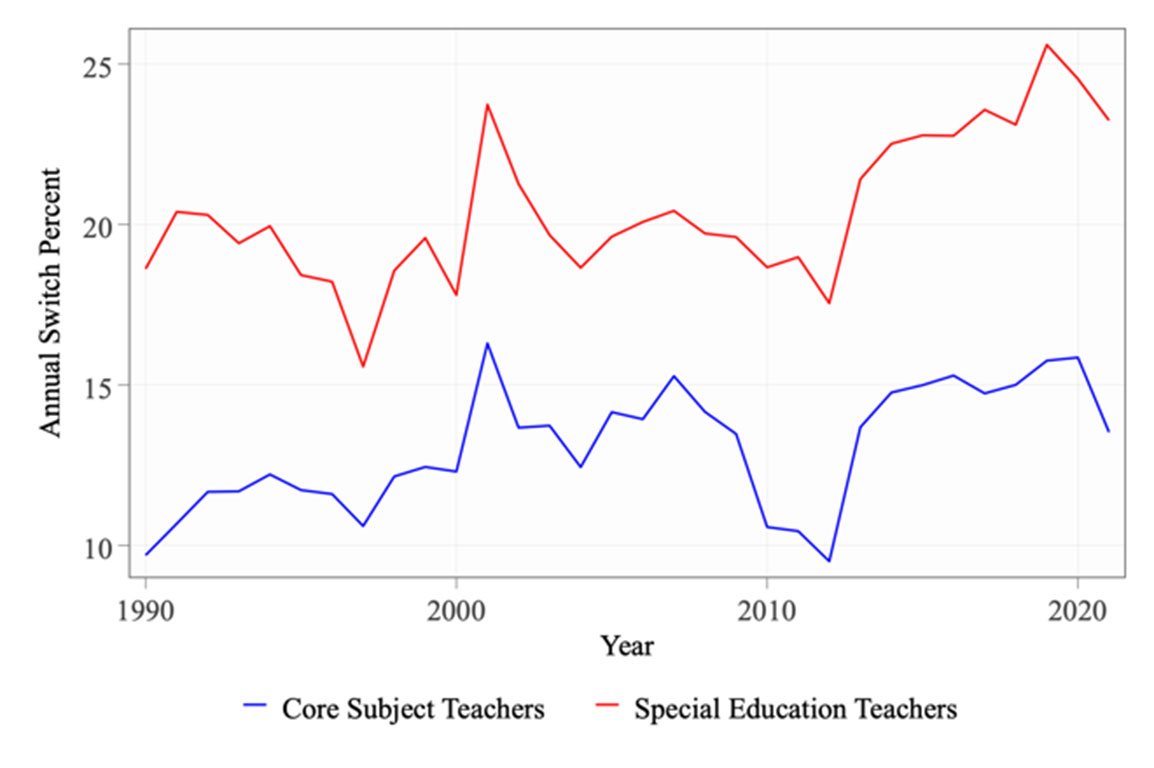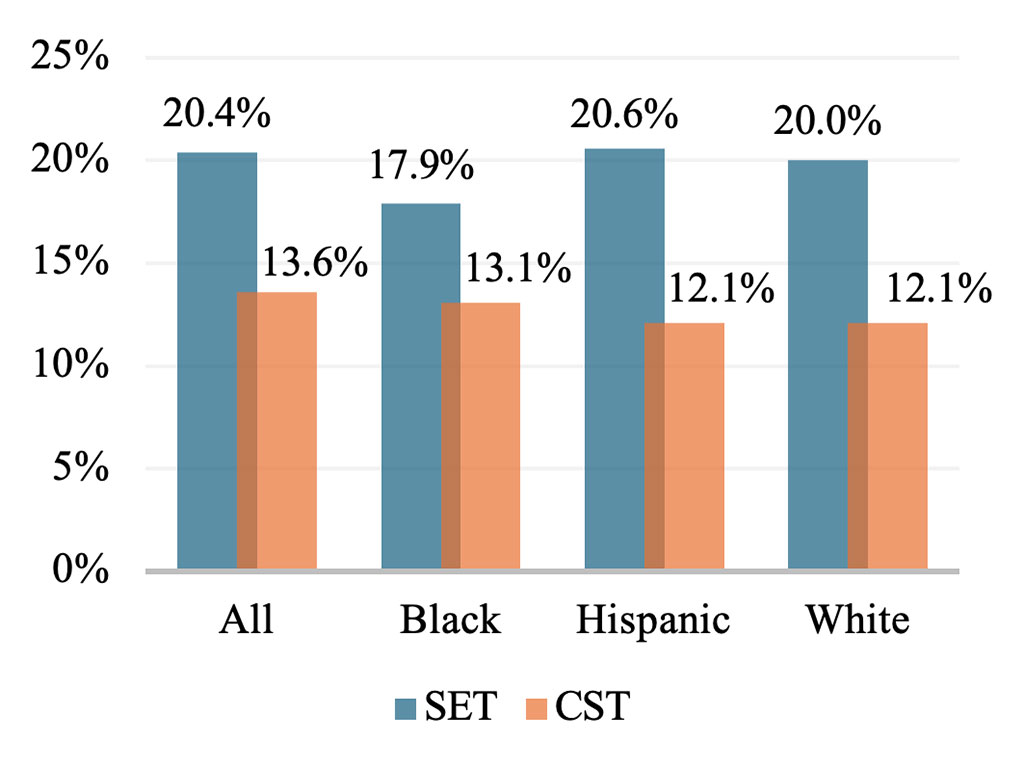
The Need for Targeted Recruitment and Retention for Special Education Teachers
Policy Brief #25-4 • October 2025
Summary
The U. S. faces growing teacher shortages expected to disproportionately affect schools serving high proportions of students living below the poverty line, students of color, and those in rural and urban areas. Currently, the nation faces pronounced special education teacher (SET) demand at a time in which numbers and percentages of students with disabilities continue to rise.
Background
The U. S. faces growing teacher shortages expected to disproportionately affect schools serving high proportions of students living below the poverty line, students of color, and those in rural and urban areas. Currently, the nation faces pronounced special education teacher (SET) demand at a time in which numbers and percentages of students with disabilities continue to rise.
While predictors of and reasons for teacher turnover and, in particular, SET turnover have been established, we know very little about to where switchers—teachers who teach in one school in one year and teach in another school the next year—move to. Switching patterns are increasingly important to understand as switchers account for half of all teacher turnover each year and fill half of all vacant teaching positions.
A recent study worked to understand SET switching trends relative to teachers in core subject teachers (CSTs)—English language arts, general elementary, math, science, social studies— and what individual, school, and district features help explain SET switching. By looking at over 30 years of data and over 100,000 SETs and 1,000,000 CSTs during that time, the study found that:
- SETs switch schools at much higher annual rates than CSTs. However, SETs also show more localized switching patterns, moving shorter distances between schools (an average of 13 miles less) and staying within district more often.
- SETs are more likely to switch to suburban schools with higher salaries, lower enrollment, and lower proportions of students classified as low-income.
SETs show differential transfer spaces by race, with different tracks of movement between Black, Hispanic, and White SETs.
Implications
The findings have considerable implications for policy surrounding special education teachers, mainly to help improve recruitment and retention efforts for high-quality SETs.
First, targeted retention strategies unique to special education may be needed. These may include local needs assessments of SETs, localized professional development support for SETs, and the development of support networks within districts to foster mentorships and sharing.
Second, policymakers and districts may consider developing incentives for SETs to work in high-need areas, such as schools with higher proportions of low-income and minority students. These may include reduced caseloads, mentorship programs, or financial incentives like loan forgiveness.
Third, policymakers may consider implementing policies that address regional and racial disparities in SET mobility and retention. These may include regional analyses to identify specific challenges and opportunities for different racial/ethnic groups, culturally responsive recruitment and retention strategies specifically for areas with limited SET diversity, and implementing exit interviews to help identify root-cause issues surrounding SET school switching.


This brief is based on a study currently under review. An earlier version was published in the Annenberg EdWorkingPapers series.
Annotation and Citations
Pendola, A., Perrone, F., & Ryan, B.* (2024). From school to school: Examining the contours of switching schools within the special education teacher labor market (EdWorkingPaper: 24-1014). Annenberg Institute at Brown University. https://doi.org/10.26300/g81p-e337
Authors
Andrew Pendola is an associate professor of educational leadership at Auburn University.
Frank Perrone is an associate professor of educational leadership at Indiana University.

